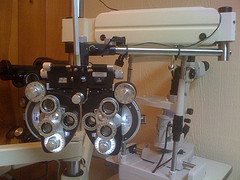 Common refractive disorders of the eye like myopia or nearsightedness are measures in units known as diopters. In a nearsighted prescription or other eye ailment, the diopters represent the amount of correction that one needs in order to normalize the vision. The more nearsighted you are, the higher your diopters prescription is.
Common refractive disorders of the eye like myopia or nearsightedness are measures in units known as diopters. In a nearsighted prescription or other eye ailment, the diopters represent the amount of correction that one needs in order to normalize the vision. The more nearsighted you are, the higher your diopters prescription is.
The prescription is composed of three numbers namely, -5.00 x 180 which represents a typical prescription. The first -5.00 number identifies the degree of your nearsightedness or farsightedness. Moreover, -sign signifies that you are nearsighted. The second number -1.50 describes your degree of astigmatism and the number could be written with either a +sign or a – sign.
The third number 180 describes the axis that indicates the astigmatism direction. For instance, a 180 degree axis means the astigmatism is horizontal. A prescription of -5.00 – 1.50 x 180 indicates that one is moderately nearsighted and with a moderate astigmatism degree in a horizontal direction. Nearsighted prescription includes wearing eyeglasses and contact lenses. Glasses are suitable for people, young and old alike. Nearsighted prescription glasses have lenses that re custom made for every eye prescription and suit individual needs. Eye doctors measure the strength of every eye and you get your eyeglass prescription.
1 Comment
Comments are closed.